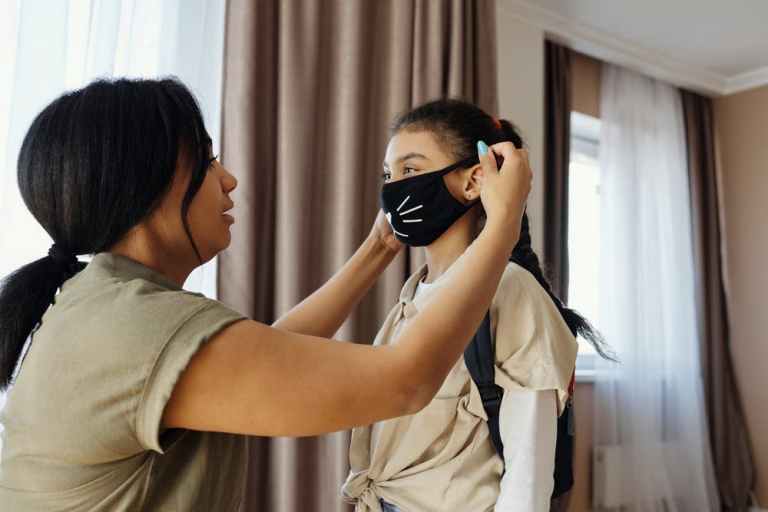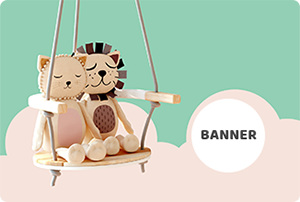
Getting Your Child with Autism to Keep a Mask on
The Covid-19 pandemic hit and wearing masks have become the new norm. It may be safe to say that masks will be worn for some time now and for our kids with Autism, in particular, this can be a huge challenge.
Children with Autism prefer consistency and predictability in their routine and wearing a mask to the doctor’s office, to the Dollar Store, or even to grandma’s house may still be somewhat unusual to them.
Another main concern which affects many children with Autism is dealing with sensory issues or sensory sensitivities. In other words, they may not like the feeling of a mask on their face which can lead them to feel anxious or frustrated.
Lastly, our little ones with Autism may lack the receptive communication skills to understand why they need to be wearing a mask to begin in, which can frustrate them even more when having to keep their mask on .
To address all these concerns, I’ve come with a few helpful tips and tricks to help your child with Autism keep his/her mask on.
Affiliate links have been used in this post. I may receive a small commission at no extra cost to you if you use any of my affiliate links. You may read the full disclosure policy.
Personalize it:
What is your child’s favorite color? Favorite cartoon? Or even favorite food? Personalize your child’s mask to her liking even if that means having her wear a bright orange mask with images of pizza slices on it.
If you cannot find a pre-made mask that your child will like, such as these popular face masks, you can help your child customize a regular cloth or surgical mask using cloth paint, posca paint markers, fabric markers, washer and dryer safe label stickers, fabric stickers or even fabric gems. Turn this into a fun joint activity and decorate your child’s mask with her. This will help your child associate her mask with play and enjoyment, potentially leading to more compliancy with wearing a mask.
Comfort
Masks are uncomfortable for all children but for our kids with sensory sensitivities, it may be even more challenging when certain textures can make their bodies feel anxious or disorganized, preventing them from feeling calm or even from focusing during school. Luckily, there are may different types of masks which makes finding a mask that your child finds comfortable a lot easier.
Try going for a cloth mask that has a breathable fabric, such as cotton masks, so your child does not feel irritation or feel too hot from wearing a mask. If you are concerned for your child’s safety, you can always have him wear a proper surgical mask over his cloth mask or two cloth masks if need be, ensuring that the softer material is closer to his skin.
The irritation from the straps of the mask may also bother your child, especially in the area behind his ears. There are many ways to relieve the pressure from behind the ears to promote a more comfortable fit:
- Cotton string tie masks – each string is made to tie behind the head and not the ears. You can also go for a mask with one loop string to tie around.
- A fashionable headband that has buttons for the straps to swing around.
- A behind-the-head hook strap
- Neck Gaiter Tube face mask – if your child does not want to feel any strings on the face.
Social Story
Kids with Autism are visual learners – books and social stories are a great way to help your child learn the importance of wearing masks. Children are more likely to wear and keep their mask on if they understand why they are being asked to do so. Social stories, which are narratives usually in the first or third person, are helpful in explaining a social event such as wearing a mask in public, using language that is developmentally appropriate for your child.
Check out my free social story on ‘Wearing Masks’, to help your child understand the importance of wearing masks and ways to make it more comfortable to do so. I specifically explain how masks help protect one another from getting sick, how to properly wear a mask, the importance of proper hand hygiene while wearing masks and more.
For books that address the importance of wearing masks with easy to follow language, check out the links below:
Watch Videos
There are many different videos to help children understand the importance of wearing masks. Similar to reading a social story, videos can help walk your child through a social scenario and explain the reasoning behind certain actions. Some of my go-to videos to help explain the importance of wearing a mask are linked below:https://www.youtube.com/embed/WhfQ71G24Pw?feature=oembedhttps://www.youtube.com/embed/lgaKLpSxQag?feature=oembed
Visual Board -First/Then
For our kids who are non-verbal, you can create a visual board with familiar images to explain what is expected of them when they need to wear a mask. For example before leaving the house, a visual board can look as follows:

You can also create a First –Then Chart, which will help your child see that wearing a mask can be a prerequisite to a fun activity or toy. The chart literally lets your child know that if he does the first action (ie. wear a mask) then the second event will occur (ie. he will get to go to the park or go for a car ride.) An example of a First-Then chart is shown below (with different choices to place in the ‘Then’ column):

Role Model
Kids learn by modeled behaviors. If they see important adults in their lives wear a mask, they will be more inclined to do so themselves. As a parent, practice safe precaution and hand hygiene for your kids to learn from. It may also be helpful to have your children see other kids, especially their close friends, properly wear a mask. A good peer support system is always beneficial in encouraging positive behaviors in children.
Play
Have your child put a mask on her favorite toys. Play is the universal language of all kids and imaginative play in particular helps your child play out hypothetical scenarios, allowing parents to see their child’s reaction to these hypothetical scenarios.
Imaginative play also allows parents to address underlying concerns their child may have in a safe space. For example when you ask your child why her doll whose ‘going to the mall’ is not wearing a mask, she may say “because she doesn’t like how it feels’. This may reflect your child’s own feelings towards wearing a mask. You can then address that concern in the play session: “Don’t worry, we can find a more comfortable mask for your doll, does that work?”.
Draw it out
When your child is drawing an image of herself swinging at the park or draws out her favorite superhero flying over skyscrapers, playfully remind her to draw in masks on all the figures in the picture. Whether the figures are superheroes, cartoon characters or members of the family, masks should be worn by everyone. This allows your child to see that there are not many exceptions to the rule and even the strongest of superheroes have to wear masks.
Safe Breaks:
If your child is struggling to keep a mask on for an extended period of time, plan ahead of time where your child can take safe breaks from wearing his mask. That may be in the car, outside of the supermarket if no one is around or when they’re at the nearby park.
Be sure to let your child know that he must first request a break before taking off his mask. For our non-verbal children who have a communication device, remind them to use the device to request a mask break or use any associated image to express their need for a break. You can use a timer to let them know how long their break will be.
You can also let your child wear a face shield, when he needs a break from wearing his mask and is not around others. A face shield will allow your child to be free of anything directly touching his face while still maintaining some degree of protection.
Praise and Reward
Using positive reinforcement, praise and reward your child for keeping his/her mask on. Let them pick out a prize beforehand, to ensure it is exciting enough to promote motivation. If your child has worn his mask for 5 minutes on day 1, reward him for keeping it on for 10 minutes the next time.
Be realistic with your goals for your children and have them slowly work on increasing the amount of time they wear their mask. You may also use the ‘First-Then Chart’, as discussed earlier, to let them know what they will earn for wearing and keeping their mask on.
Answer Questions
Let your child know that you are always available to answer any questions she may have regarding wearing masks. Your child may be wondering how long she’ll have to wear a mask for, why someone she saw at the park wasn’t wearing one or even why her doctor’s mask looks different from her mask. Make time to address all questions and concerns your child may have to ensure that she continues feeling comfortable with wearing masks.
Hope that was helpful. If you guys have any other helpful tips on helping your children wear and keep their mask on, please share in the comment section.
Hope everyone is staying safe. See you in my next post!



